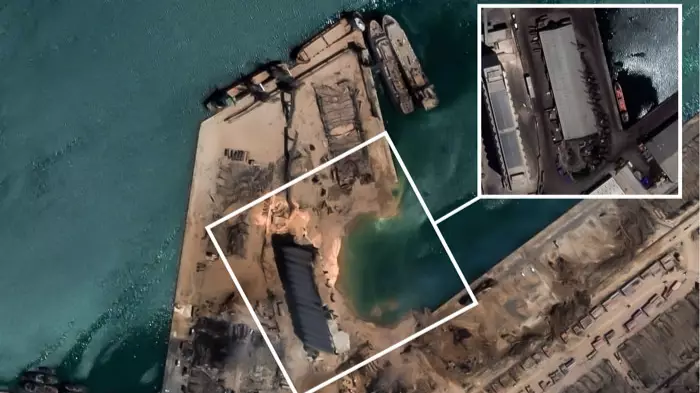
New satellite imagery shows the impact of yesterday's blast in Beirut, with devastating before-and-after pictures from above illustrating the sheer destruction around the port area.
The images were captured by European Space Imaging, just hours after the explosion.
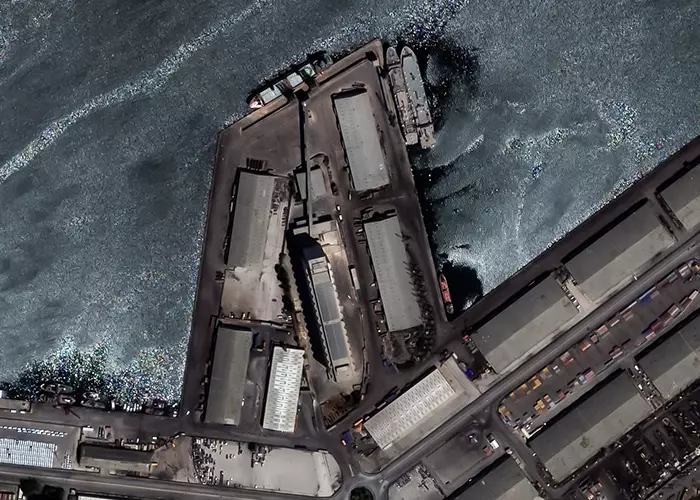
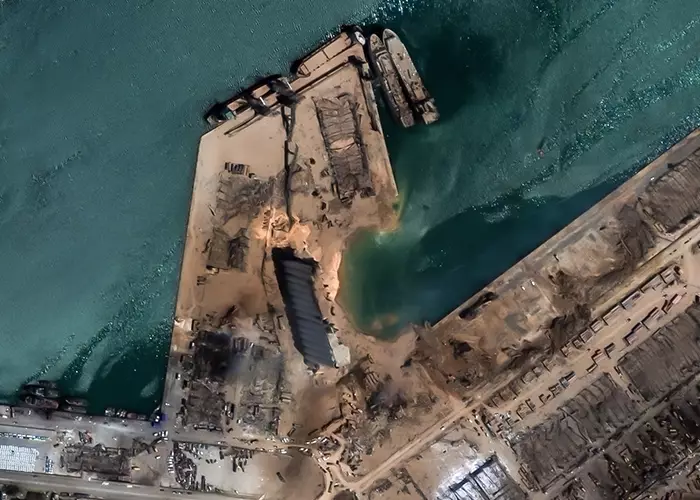
A post on its website explains: "Very High Resolution (VHR) satellite images captured only hours ago with WorldView-2 by European Space Imaging highlight the scope of the damage to the surrounding blast site.
Advert
"Almost 20 buildings have been completely destroyed, whilst hundreds of other surrounding buildings have been significantly damaged. A cruise ship has been overturned and four tankers have been damaged.
"According to AIS data, this cruise ship is the 'Orient Queen' sailing under the flag of Bahamas, and originating from port King Abdullah, Saudi Arabia."
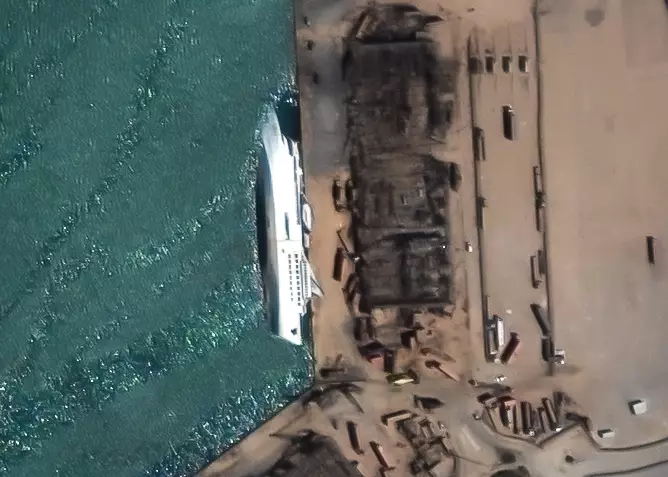
Adrian Zevenbergen, Managing Director, European Space Imaging, said: "When disaster strikes, VHR satellite imagery can provide critical information for emergency relief operations to evaluate the extent of damage and get an entire overview of the scene.
Advert
"It supplies crisis management teams with logistical insights for planning and helps to monitor and detect any changes that may be critical to minimising or even eliminating further catastrophe."
ESI also said it will continue to monitor the situation, and would make any further images available as soon as possible.
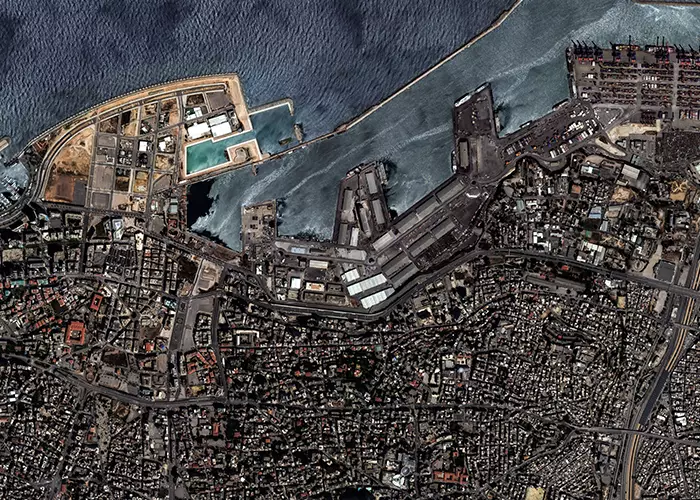
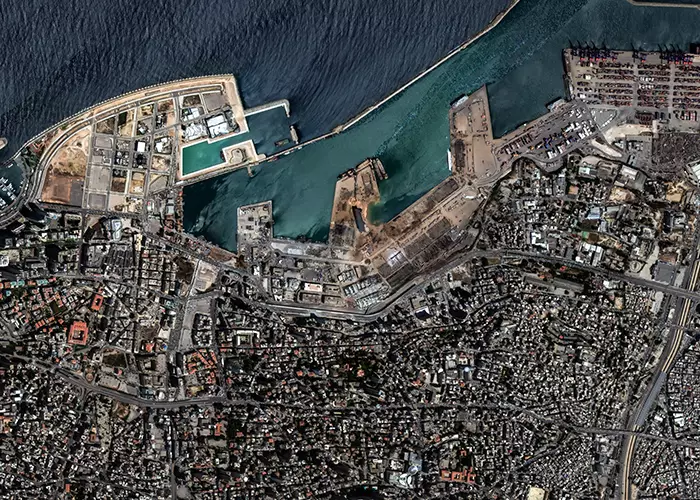
The explosion shook the Lebanese capital yesterday at around 6pm local time, killing more than 125 people and injuring more than 4,000 - also triggering a two-week state of emergency.
Advert
In an emergency cabinet meeting on Wednesday, President Michel Aoun said: "No words can describe the horror that has hit Beirut last night, turning it into a disaster-stricken city."
Lebanon's prime minister Hassan Diab said the explosion was caused by 2,700 tonnes of ammonium nitrate, which is used to make fertilisers and explosives, that had been stored in a nearby port warehouse for the past six years.
These claims have also been backed up by the country's General Security chief Abbas Ibrahim, who blamed the blast on 'highly explosive material' that had been confiscated years earlier and kept in the warehouse.
Advert
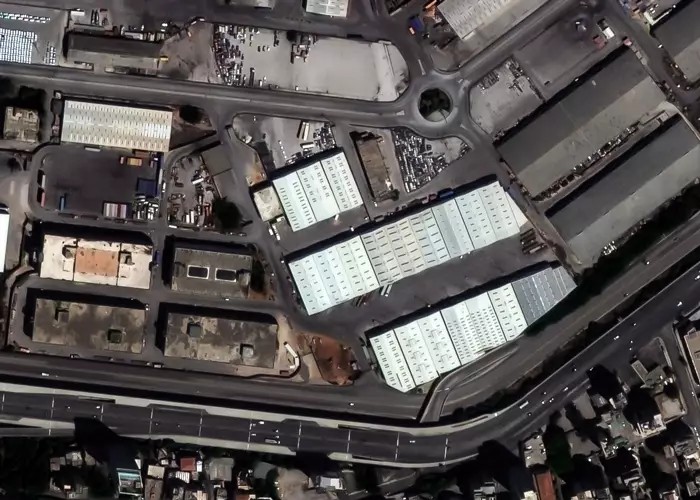
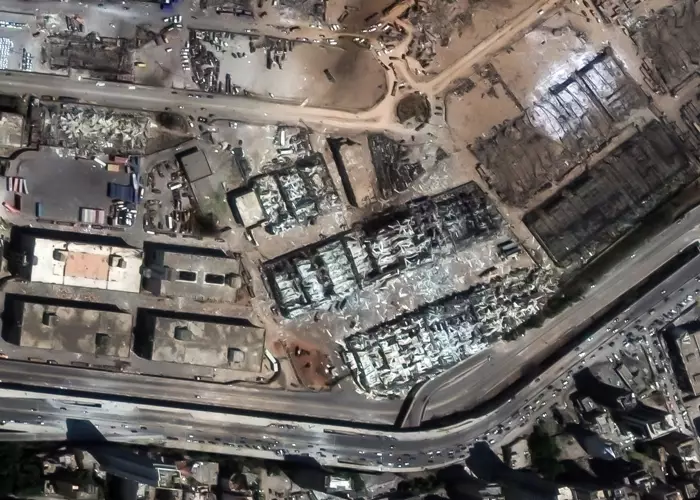
Emergency services continue to scour the wreckage looking for people who are unaccounted for, with many trapped beneath the rubble and feared dead.
Advert
The city's Governor Marwan Abboud told the media that it could cost up to $5 billion to repair the horrific damage caused by the explosion, with 300,000 people having lost their homes.
Featured Image Credit: European Space ImagingTopics: World News, News